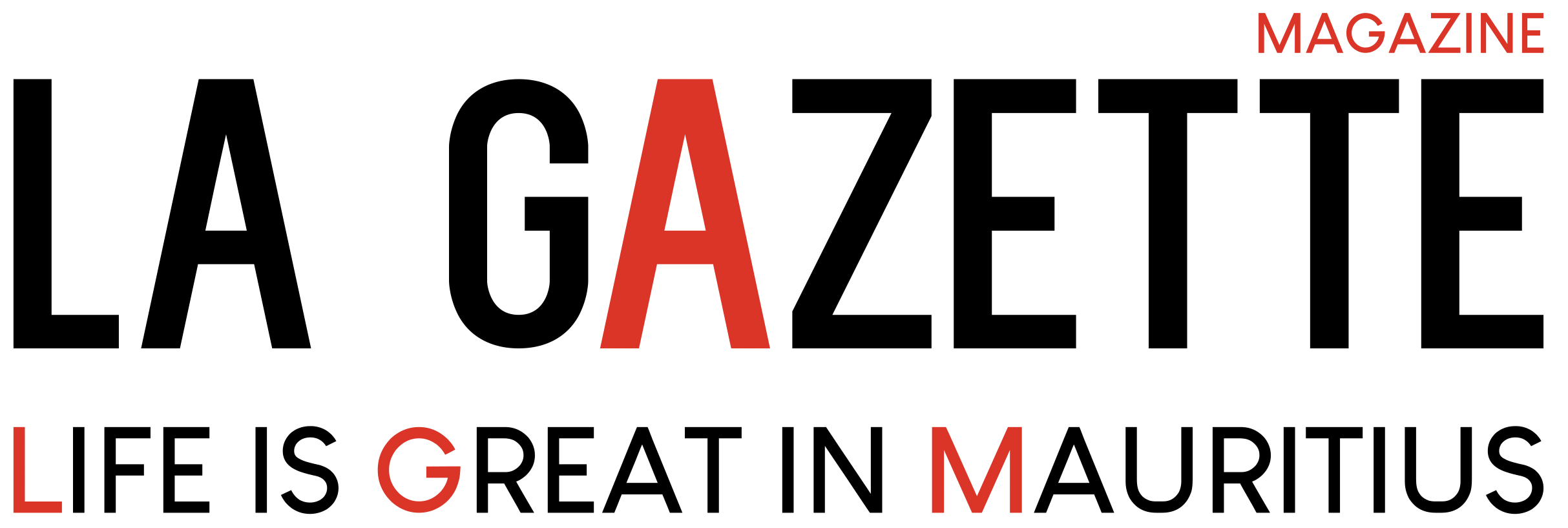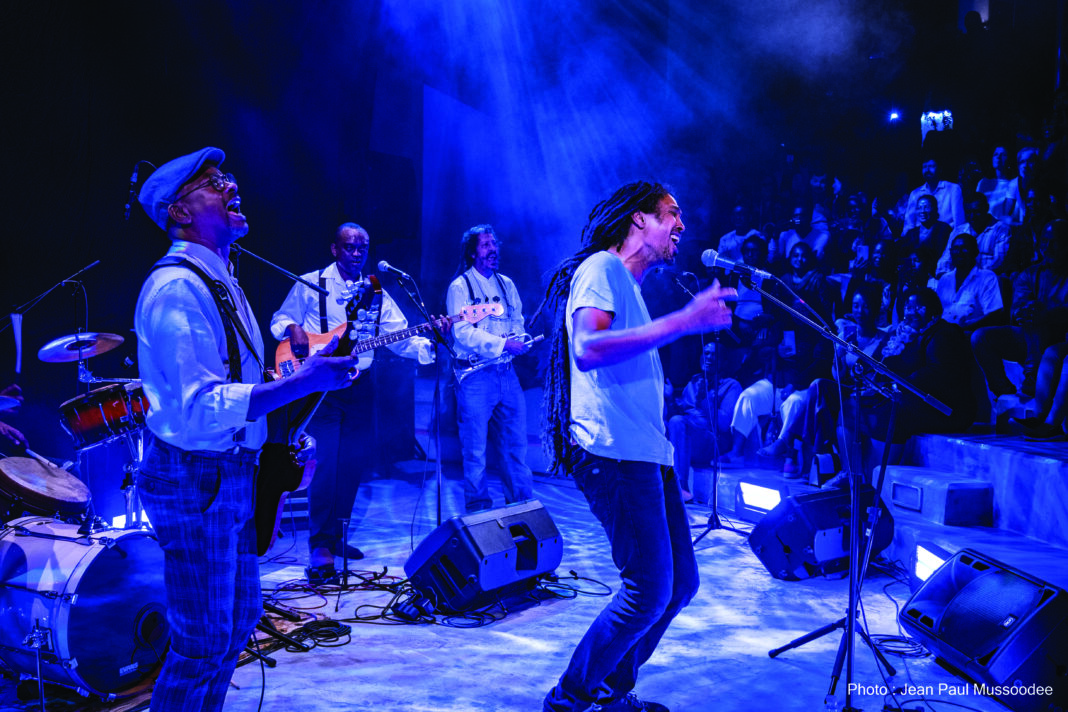Concerts, dance, theater, exhibitions, book festival… the cultural sector between, as it does every year at this time, in an atmosphere of excitement that will build to a crescendo until Christmas. By the way, how are the artists and professionals involved? , since the post-confinement recovery? We take a look at what’s going on with various players in the performing arts, visual arts and books.
Dominique Bellier
This year has seen two major advances in the cultural sector, which will help to structure and develop it. Firstly, in early January, the Indian Ocean Commission (IOC) announced that it would be allocating a budget of 5.1 million euros over five years to the development of cultural and creative industries (CCI) in the Indian Ocean region. Project manager Juliette Janin explains that the aim is to position this sector as a driver of sustainable development, and to strengthen the capacity of professionals, heritage facilities, governance and entrepreneurship. “Tourists, for example, are increasingly coming to discover the cultures of the regions they visit, and the IOC countries have strong, living traditions that deserve to be enhanced. The area has a rich history. Each territory has a strong culture. And their artists are increasingly making their mark beyond the Indian Ocean.
A feasibility study carried out in 2020 identified the most promising sectors, their strengths and weaknesses in each country, and planned 25 types of activity up to 2027. The first concrete actions have been launched since January: a call for tenders has been launched to produce podcasts on music and traditions, and heritage training courses have been provided in the Comoros, Madagascar and, most recently, Mauritius, with other member states to follow. In particular, the IOC wishes to encourage the mobility of cultural products and artists, co-creation in all artistic disciplines, involving at least two countries in the zone, and positive discrimination towards women and vulnerable people.
A status at last!
Another long-awaited event, on July 13 the French National Assembly passed a law that gives artists and industry professionals a status: The Status of the Artist Act 2023. The first consultations and workshops with Unesco experts behind this text began in 2017. This framework law categorizes artists and trades in the sector, distinguishing between professionals and casuals. A council of arts professionals will be created to manage their registration. It will also define and pilot specific welfare and pension schemes and any measures favoring their social and economic stability. Fears have been expressed in the arts community about the way in which the distinction between professionals and casuals will be made, as well as about the composition of the council, which will be dominated by representatives of the ministries…
While we wait for these measures to have concrete effects on the ground, how is life as an artist in Mauritius? In the aftermath of the Covid crisis, performers and spectators rushed to make up for lost time, demonstrating an irrepressible desire to gather and socialize around a concert or an exhibition, as witnessed by the joyous and magical atmosphere of the 7th edition of the Kaz’out festival in November 2020 and the first vernissage of the Imaaya gallery, which had invited artists to create during the confinement and exhibit on its website.
While the Ministry’s Director of Culture, Arvind Boodhun, is proud of the government’s determination to create the ecosystem that will enable the contribution of CCIs to GDP to be doubled within ten years, Covid has made things a little more difficult, as it has fallen from 3.5% in 2019 before the crisis to 2.4% last year. The road ahead will be longer… These days, the private sector often has other priorities than cultural patronage, and we recall that many musicians have thrown in the towel and worked in other sectors to fill the pot.
Music first!
Music is the country’s most dense, dynamic and structured cultural sector. The IOC recognizes it as “the most fertile sector” in the region, in terms of talent, productions, organizations, professional networks and events, as well as “one of the strongest elements in the cultural cement of an Indian Ocean identity”… and a Mauritian one at that. It’s not for nothing that Port-Louis joined UNESCO’s Creative Cities network at the end of 2021, in the Music category!
On Reunion Island, Cassiya, Linzi Bacbotte, Triton and Alain Ramanisum are the talk of the town. Like Suprême NTM in France, the little band of youngsters who danced hip hop in the streets of Plaisance (Rose-Hill) in ’92 became the voice of the neighborhoods with the Otentikk Street Brothers. Since then, they’ve created their own production company, the Donn Sa international reggae festival in 2005, their own clothing line, and toured the world. One of their members, Blakkayo, twice a finalist for RFI’s Découvertes award, is now pursuing an international career.
In a more world and jazz style, Yannick Nanette took his kreol singing on a major tour of Canada in August. Mauritius also boasts a number of international stars, including jazz and world music bassist Linley Marthe, Mario Ramsamy of the group Image, Jean-Paul ‘Bluey’ Maunick of the group Incognito, the Thomas brothers, whose trumpeter Philippe trains the youngsters of Mo’zar, and pianist and composer Jerry Léonide… all breathtaking achievements.
The niaque
Professionals visiting Mauritius are always amazed by the energy of our artists, who are always up for anything… Western classical music has very few teachers in secondary schools and, recently, the Mauritian adaptation of The Magic Flute again required the arrival of 10 German musicians, including the conductor.
Violinist Guy-Noël Clarisse is annoyed that Mauritius still doesn’t have its own philharmonic orchestra: “Ghana has its own, the level isn’t top, but the structure exists and is evolving. We have some very good musicians in Mauritius, full of talent in the hotels, who, lacking training, are lost when they face the international market. To get a valid diploma in classical music, you have to go and do your degrees abroad…”. Guy-Noël created the 415 chamber ensemble and plays regularly in Reunionese orchestras, but he spends his days teaching. The members of 415 are bricklayers, turners, office workers or teachers by day… and musicians by night. But they are so keen that they are presenting their Strings go pop concert for the 7th time in October… Classical training is a passport to all kinds of music: the violinist has long played in a Chinese orchestra, in Hum Tum at MBC and has just taken part in the concert in tribute to Kishore Kumar. Rather than the François Mitterrand conservatory on one side and the MGI’s Indian classical music department on the other, Guy-Noël dreams of a large platform that would bring all styles together and encourage their encounters.
Covid boosts music
At the beginning of August, Stephan Rezannah announced the cancellation of the5th edition of MOMIX, the music market that puts Mauritius on the international music map! He is thinking of another model for these professional gatherings. As a producer, he is now concentrating on event production and programming, such as N’Joy, a key address for Mauritian musical creativity, or Kafe Kiltir Moris, which has just launched its 7th edition – a collector’s edition – to celebrate the 60th anniversary of Phœnix beer. In six years, PhœnixBev has invested 25 million in training and produced some 75 artists. Just goes to show that the private sector can make a massive and lasting commitment to culture!
For Stephan, the Covid effect quickly wore off: “I’d even go so far as to say that Covid boosted the market! Sakifo in Réunion broke records, and N’Joy was packed every weekend last year in November and December. The public is there for the live music, but it’s consuming far fewer cultural products. Anyone who only makes CDs these days is sure to go out of business! And there’s one constant: regardless of their success, performing artists all earn an irregular living. That’s why the Ministry should take inspiration from the intermittents du spectacle model, which provides an allowance to supplement activities that are by their very nature discontinuous…”.
And where are we going?
N’Joy, Awanam, Big Willy’s, Backstage… 5 or 6 venues offer live music every week. There are also more informal platforms such as Le Sapin or Kenzi Bar. In comparison,” continues Stephan, “La Réunion has 15 or 20, for a population of less than 900,000! Either we have 3,000-seat venues that need to be equipped, or we have an equipped venue on a human scale, like the Caudan Arts Centre (CAC), where you’re obliged to… sit! We need more concert venues.
For freelance stage manager Denis Essoo, this is ultimately not a problem, as musicians now perform in all kinds of venues, such as L’Aventure du Sucre, Casela, hotels and so on. “This phenomenon creates more opportunities for the entertainment industry. In one evening, a musician will play in three or four places, and I’ll come across just as many different decorators or lighting designers… And then we also have to anticipate tomorrow’s world, where all these activities will be increasingly digitalized.”
Today, the Caudan Arts Centre is the only multi-purpose theater with year-round programming worthy of the name, along with Miselaine Duval’s Komiko Comedy Club, the queen of Mauritian comedy, in Belle-Rose. We still have two historic venues that are in need of renovation and have been closed to the public for decades: the Plaza in Rose-Hill and the theater in Port-Louis.
The Mauritian challenge!
CAC director Ashish Beesoondial is pleased to note that the performing arts have found their stride fairly quickly after the crisis, but he feels that these activities need to go further where they are not expected, and that the cultural offer needs to be multiplied to maintain and arouse spectator interest…
“We need,” he tells us, “to develop live performance in all its forms and in all public places and cultural sites: museums, historic sites, restaurants and shopping malls… There could be good street performances during Heritage Days, for example.” There’s no shortage of courses and private acting classes (La School, Kevin Bissonauth, Marie-Ange Kœnig, Sandrine Raghoonauth, etc.), but Ashish and Miselaine both call for the creation of a national conservatory of dramatic arts, rich in all our expressive influences.
He’s delighted to see more young actors, but deplores the lack of professionals in the dance and theater professions, such as set designers, costume designers and technicians. “It’s all about education. The François Mitterrand Conservatory does what it can. The MGI operates on the Shanti Niketan model. The CCEF works for Francophones, and we have every cultural center and speaking union imaginable. But Mauritius is in the best position to take up this incredible challenge of bringing all this together… to develop a common and unique creativity!”
Art market in the making
I don’t understand why a country like Mauritius doesn’t teach Arabic calligraphy and Chinese painting at the Beaux-Arts. Apart from the fact that China is the new major market for contemporary art, visual artists need to be open-minded to all schools and techniques in order to expand.”
A round-table discussion organized as part of the Salon de Mai on the challenges facing contemporary art in Mauritius highlighted the need to open up more to artists from the region. For years, painter Pierre Argo has been repeating over and over again that companies should set up a 1% tax on culture. Even 0.5% would be great,” he said last May. And all public organizations, municipalities, districts, works councils, etc. should contribute in one way or another to the dissemination of creation. Artists are the scouts, the avant-garde of tomorrow’s world!”
At the same round table, cultural mediator Géraldine Hennequin pointed to a nebulous approach to the very definition of contemporary art in Mauritius, and the cruel lack of artistic engineering professions. “Visual artists need support and it’s not enough to have a few private galleries. We also need to be more aggressive in creating the desire to see exhibitions and to encourage creations that question our society. What’s more, there are no major public art commissions that would enable us to innovate in terms of media and content.”
Gallery owner and collector Pascal Soufflet has no regrets about leaving La Réunion for Mauritius twelve years ago: “There are a lot more opportunities here to sell art. In La Réunion, I hardly ever saw tourists, whereas here they represent 30% of my painting sales.” He admits he doesn’t take many risks. “Art buyers here are very classic in their choices, quite skittish about the abstract or what comes from elsewhere.” Another surprising aspect is that prices fluctuate phenomenally, from galleries such as Imaaya or Ilha do Cirne, to those in hotels with exhibitors from elsewhere.
Pascal Soufflet regrets these disparities and price hikes: “Perhaps it’s due to a kind of market immaturity. I would say that only 10% of buyers are true connoisseurs. If there were a national gallery that showed everything that’s been done in the past and exhibited the best current artists, it would rationalize the market.
From wings to books
Trou d’Eau Douce will transform itself into an international book village on October 13, 14 and 15, for the third edition of its festival, where great Indian writers will rub shoulders with our own authors. But beyond these three days in the limelight, how do they cope with the rest of the year?
Alain Gordon Gentil, writer and founder of Editions Pamplemousses, believes that the book market is doing reasonably well in Mauritius, given the number of people living on the island. “It’s wrong to say that Mauritians don’t read. In my opinion, they’re about average worldwide. 500 copies sold for a population of 1.2 million is quite a success in Mauritius. The percentage of sales is the same for a success in France. On the other hand, he regrets the indifference of our booksellers to Mauritian literature, which is not often on display. At Atelier des Nomades, Corinne Fleury is delighted to report higher sales figures than before Covid: “Books have finally benefited from this crisis. People have refocused on this essential object that we have at hand and that allows us to escape…”.
On the other hand, the publisher is concerned about the cost of transport and freight, which soared during the crisis and has not fallen since. This situation is not conducive to the circulation of books between the islands, but the IOC is planning to subsidize their export to compensate. It’s the same for authors,” says Corinne. Taking them to La Réunion or Madagascar is a priority, but the cost means we have to make choices.” L’Atelier des Nomades sells as much on La Réunion as it does in Mauritius…
Abroad, apart from our two great ambassadors Ananda Devi and Nathacha Appanah, Mauritian literature is generally rather unknown. But things are changing: Corinne Fleury has opened a new avenue in Africa, where she introduces Mauritian and Indian Ocean authors. Three of them were finalists for the Prix Ivoire, not to mention the Prix Orange awarded to Michèle Rakotoson. The publisher also regularly sells the rights to her children’s titles to West African publishers, who then publish our authors…
The abundance of activities in all areas of culture in Mauritius demonstrates the dynamism of this fast-developing sector. But let’s not lose sight of the essential, as the late writer Milan Kundera reminds us: “Culture is the memory of the people, the collective consciousness of historical continuity, the way of thinking and living. Books and paintings are but the mirror in which this profound culture is reflected, concentrated and preserved.”
A few pointers
Given the lack of reliable figures on the various fields of culture, the Ministry of Arts and Cultural Heritage is working with Unesco to set up cultural indicators that will enable it to survey the evolution of CCI market by market, each year, with data that can be compared from one country to another.
This fast-growing sector accounts for 3% of global GDP, 29.5 million jobs and US$ 2,250 billion a year… but is set to fall by 31% by 2020! (Source Unesco 2021)
In Mauritius, it has a turnover of Rs 14 billion, representing 3.5% of GDP in 2019 and 2.4% in 2022. 3200 artists have been assisted by the Ministry of Arts, from 2021 to the present day. Since 2018, the National Arts Fund has facilitated over a hundred artistic projects to the tune of Rs 50 million in total.








